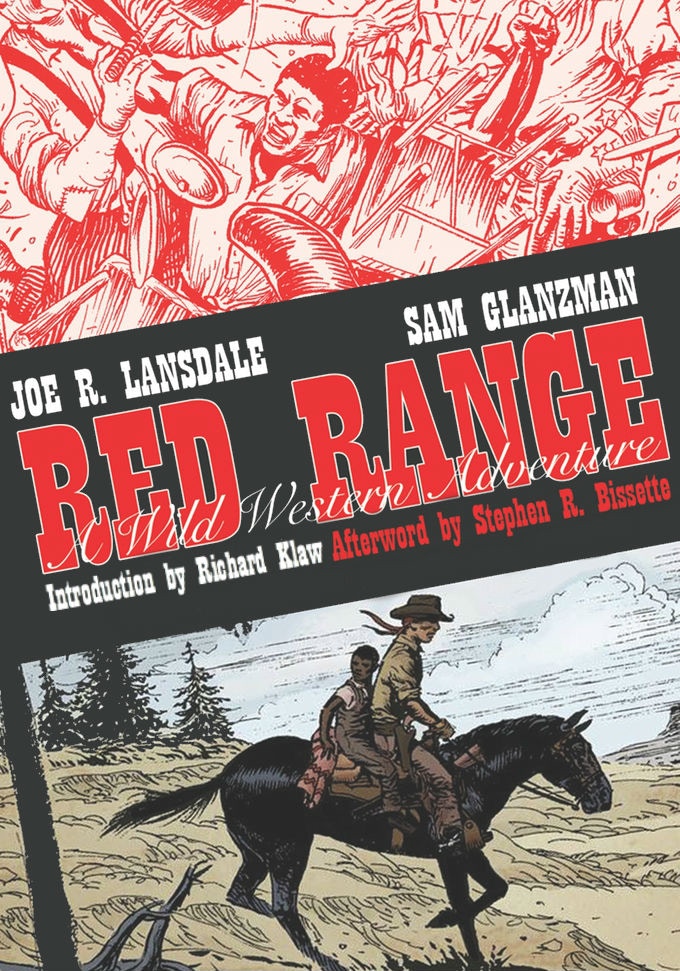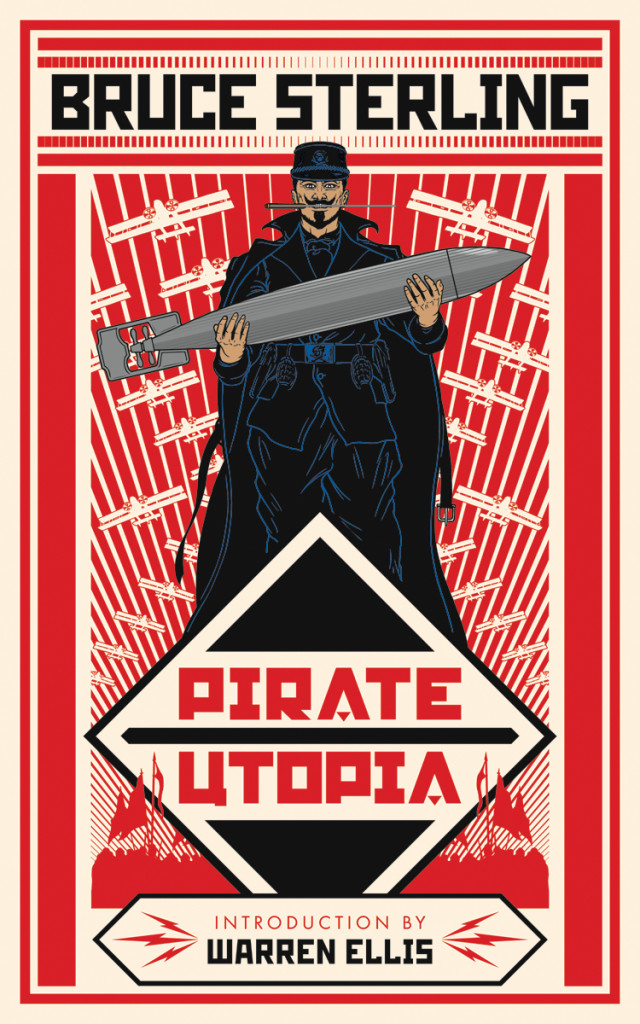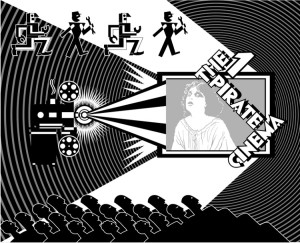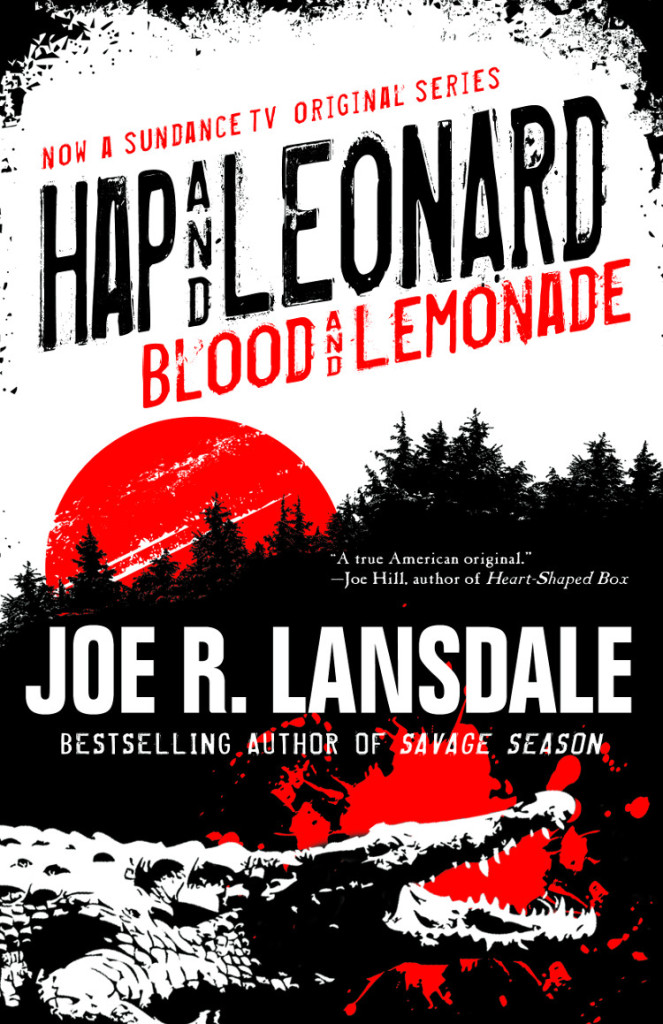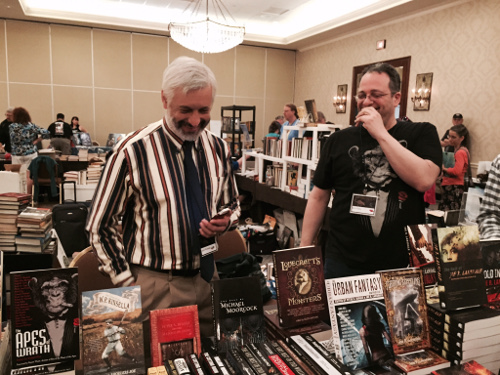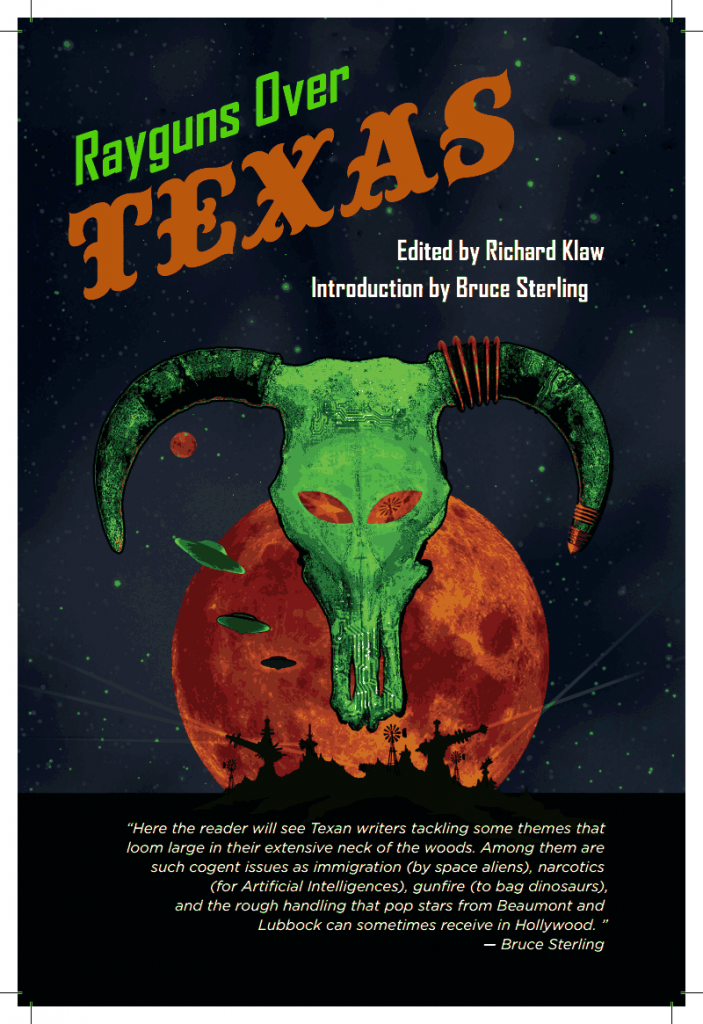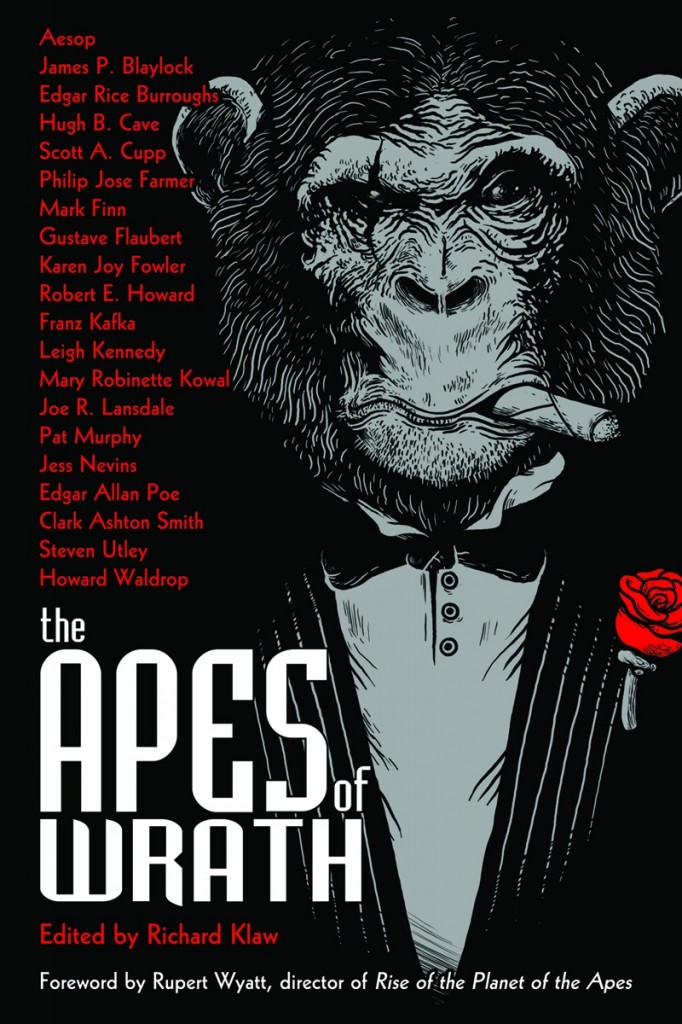As revealed in my previous post, I’m moderating the Steampunk panel at this weekend’s Comicpalooza. Newer folks may wonder why I’m moderating such a panel. (Or not, but I’m going to share this with you anyway).
Way back in 2008, I produced this little essay for Ann and Jeff VanderMeer’s bestselling, seminal anthology Steampunk. The magnificent book came out just at the beginnings of the latest Steampunk craze. After nine printings, one could argue it helped fan the flames of the movement.
Without further ado, here’s the unabridged piece.
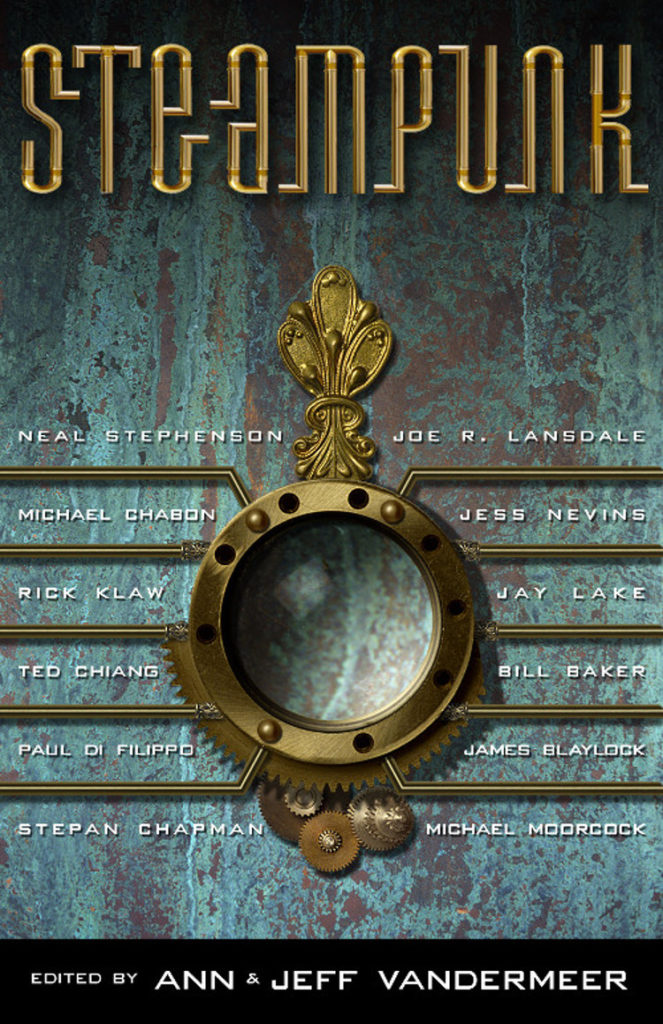
The Steam-Driven Time Machine:
A Pop Culture Survey
by
Rick Klaw
When I was a child in the seventies, it seemed like the 1961 Ray Harryhausen special effects-laden The Mysterious Island played constantly on the TV. Not that I minded. Michael Craig leads a crew of Confederate P.O.W. escapees as they pilot a hot air balloon toward points unknown. Crash landing on an apparently deserted island, the castaways encounter giant animals: a crab, a flightless bird, bees and an cephalopod, all presented in Harryhausen’s dynamic stop motion animation. The group discovers the presumed dead Captain Nemo, who had mutated the animals as part of an experiment. Throw in the pirates that attack the island and you have the recipe for a near-perfect movie. By nine years old, after many repeated viewings the film entered my personal zeitgeist, informing my later tastes and many of my creative decisions.
Mysterious Island was my first exposure to steampunk, long before K. W. Jeter coined the word in the late 1980s.
Personally, I think Victorian fantasies are going to be the next big thing, as long as we can come up with a fitting collective term for [Tim] Powers, [James] Blaylock and myself. Something based on the appropriate technology of the era; like “steampunks,” perhaps… (Locus, #315 April 1987)
Featuring interviews with Jeter and Blaylock plus a cover by Tim Powers, the Winter, 1988 issue of Nova Express introduced me to the term “steampunk.” By that time Powers and Blaylock were both part of my reading repertoire. Jeter joined a few years later.
Among many of the advantages of living in Austin as a young science fiction fan in the late eighties and early nineties was the strong and fairly well organized creative community. The local science fiction literary convention, Armadillocon birthed though probably as a surrogate the Cyberpunk movement, as it was the first North American convention to feature William Gibson, Bruce Sterling, Lewis Shiner, and Pat Cadigan as guests of honor. Austinite Lawrence Person’s previously mentioned ‘zine Nova Express further encouraged science fiction critical studies with insightful interviews and reviews by professionals and fans alike.
Some twenty years later, pop culture has embraced steampunk. Publishing, film, and even the Internet embolden the term as a branding tool. Nary a week goes by without Boing Boing (www.boingboing.net), the venerable group blog, posting about some sort of steampunk inspired gadget, cartoon, or essay. A search of their archives generates almost 1500 articles. Subjects vary greatly: laptops, keyboards, watches, Transformers, planes, Car Wars, submarines, and so on. Many articles showcase functioning modern technology using steampunk methods and materials. Others present actual working machines from the 19th century. Images presenting artistic depictions of steampunk, paintings, sculptures, architecture and the like. Reinterpretations of popular shows such as Star Trek and Star Wars litter the listings. Original short films featuring steampunk tropes offer many amusing and sometimes exciting diversions.
The user-generated online encyclopedia Wikipedia (en.wikipedia.org) contains lengthy, extensive entries for both “Steampunk” and “List of steampunk works”, citing an array of sources. The English language version of the Polish site Retrostacji, Steampunkopedia (steampunk.republika.pl) offers the most comprehensive steampunk works chronological bibliography available on the web along with numerous links to steampunk-inspired videos. Sadly, the site stopped updating in February, 2007.
Using the collaborative wiki-method, ニther Emporium (etheremporium.pbwiki.com) claims “to provide a onestop resource and archive for all things Steampunk”. Potentially very interesting, the sparse site supplies some intriguing information and views from the nascent steampunk subculture. Another online cultural source, SteamPunk Magazine (www.steampunkmagazine.com), dedicated to “promoting steampunk as a culture, as more than a sub-category of fiction”, produces a pdf format magazine and for-sale print version under the auspices of the Creative Commons license, an agreement that allows anyone to share and distribute the work as long as it is not for commercial or financial gain. Each of the three currently produced issues contain fiction, features exploring different aspects of the subgenre, and interviews with steampunk luminaries.
Even Wired (www.wired.com), home of the techno elite, lists some 930 archived pages about the subgenre. Often sharing similar coverage with its cyberculture cousin Boing Boing, the subjects run the pop culture gamut. Oddly, the domain name steampunk.com works as the home for The Speculative Fiction Clearing House, a portal for science fiction websites. The site has only a tangential relationship with the subgenre.
Back in the late eighties, I encountered my first steampunk role playing game. Featuring Victorian space travel and steam powered devices, Space 1889 (1988) was the first primarily steampunk rpg. At the time, I immersed myself in the rpg community, envisioning myself more of a gamer and possibly role play games creator than an essay or even a fiction writer. This delusion lasted for about two years, after which I decided to devote my creative energies toward other writing and editing pursuits.

Prior to Space 1889, steampunk elements frequently cropped up in games. Most Dungeons & Dragons campaigns contained various steam-powered devices, usually projectiles or vehicles. Hero Games’ pulp era adventure game Justice, Inc (1984) featured many steampunk-type props, most notably steam-powered robots. Cthulhu By Gaslight, Victorian era rules for the Lovecraft-inspired Call of Cthulhu game, premiered in 1986. While set in the 1890s, the supplement relied less on steampunk– beyond an odd section on time travel– and more on real-world settings.
In the ensuing years, steampunk routinely appeared in rpgs. Within the popular gaming universes such as Warhammer, GURPS, and Dungeons & Dragons, steam-driven devices and Victorian era tropes became commonplace. The cross-pollination of the American Old West and anachronistic devices thrived within several games, chiefly Deadlands and the Japanese title Terra the Gunslinger.
Even LARPers got in the act. Premiering May 21, 2004 near Baltimore, MD with a three-day episode, Brassey’s Game, a steampunk live action role playing game (LARP), involved approximately 30 players in Victorian garb, who relied on heavy character interaction. The initial campaign ran for six weekend-long episodes. Six other stand alone Brassey’s Game episodes took place during the first campaign. Since its introduction, several other groups from various parts of the US, using modified versions of the original rules, participated in their own Brassey’s Game events.
Another element of my seventies childhood, The Wild Wild West, the first, best, and longest running steampunk television series, forged my future love of the weird western. The show related the adventures of two Secret Service agents- James West, a charming, womanizing hero, and Artemus Gordon, inventor and master of disguise– as they protected, often in secret, the United States, its interests and citizens. In four seasons from 1965-1969, the duo encountered all sorts of odd villainy including a brilliant but insane dwarf, recurring arch-villain Dr. Miguelito Quixote Loveless, and bizarre weaponry such as cue stick guns and a triangular steam-powered tank with a barbed tip. Combining the best elements of traditional westerns and James Bond, The Wild Wild West spawned two late seventies TV movies with the original cast, a dreadful 1999 big screen movie, two separate comic book series (1960s Gold Key and 1991 Millennium Publications), and four novels, as well as influencing a generation of writers including Joe R. Lansdale, Norman Partridge, and Howard Waldrop.

The Adventures of Brisco County, Jr., the direct thematic descendant of The Wild Wild West, premiered on August 27, 1993, starring the cult actor Bruce Campbell of Evil Dead fame as the title character. Set in the 1890s, Brisco attempts to capture the members of the Bly Gang, the cutthroats responsible for his father’s death. The series sported an intriguing cast of characters: Lord Bowler, bounty hunter and rival, lawyer Socrates Poole, Dixie Cousins, con-woman and Brisco’s great love, and inventor/scientist Professor Wickwire, brilliantly portrayed by John Astin and supplier of Brisco’s steampunk-like gadgetry. Even with clever story lines, the show lasted for only one season.
Perhaps the most unexpected use of weird western steampunk tropes occurred in the second season of the animated Adventures of Batman & Robin. “Showdown” with a Joe R. Lansdale teleplay from a story by Kevin Altieri, Paul Dini, and Bruce W. Timm tells of the immortal Batman villain Ra’s al Ghul’s 1883 confrontation with the DC Comics gunslinger Jonah Hex. The battle centers around a plot to blow up the nearly-completed tracks of a transcontinental railroad using dirigibles loaded with cannons and other explosives.
Because starring in one Wild Wild West-inspired short lived TV series is never enough, Bruce Campbell portrayed the title character for two seasons in the disappointingly inane Jack of All Trades (2000). Jack Stiles, a secret service agent stationed by President Thomas Jefferson on the fictional French-controlled island of Palau-Palau, defends American interests while serving as the aide to a French aristocratic. Jack employs many steampunk-type weapons and gadgets. Loosely based on the classic 1919 novel, Sir Arthur Conan Doyle’s The Lost World amazingly ran for three seasons (1999-2000) with poor special effects, bad acting, poorly crafted storylines, and some minor steampunk elements. The 1982 Q.E.D., set in Edwardian England, last for only six episodes. Voyagers!, a time travel adventure series with periodic steampunk bits, managed 22 episodes over one season (1982-1983). Steampunk materials appeared in several episodes of the various Doctor Who incarnations.
Under the premise that Jules Verne actually lived the adventures that he wrote about, The Secret Adventures of Jules Verne (2000) delivered steampunk action with airships, steam powered devices, and even a steampunk cyborg! Playing upon the inherent metafictional possibilities, several episodes featured “real life” authors and personalities such as Samuel Clemens, Queen Victoria, Alexander Dumas, Cardinal Richelieu (a time travel episode), and King Louis XIII. The promising show never jelled and was canceled after one season.
The Japanese have also embraced steampunk television, albeit the animated variety. Based on the long running manga Fullmetal Alchemist, set in an alternate late- 20th century society that practices alchemy and uses primarily early 20th technology, enjoyed a 51 episode run (2003-2004) and an 2005 anime feature film. Steam Detectives (1989-1990) follows the adventures of a young detective in a reality where the only source of energy is steam power. Set on a floating world with stylized Victorian fashions, Last Exile (2003) relates the story of airship pilots Claus and Lavie and their involvement in a plot about a mysterious cargo.
Another steampunk show derived from the works of Jules Verne, Nadia: The Secret of Blue Water (1989-1991) inspired a feature film sequel (1992) and a manga series. Set in 1889, circus performer Nadia, young inventor Jean Ratlique, and the famed Captain Nemo attempt to save the world from the Atlantean known as Gargolye who is bent on restoring the former underseas empire. Translated into eight different languages, the series achieved worldwide popularity.
Based on a series of popular video games, Sakura Wars relates an alternate 1920s reality that uses steam primarily to power all sorts of modern devices. Developed into numerous video games on several platforms, a manga, a tv series, five OVA tie-ins, and a feature length movie, Sakura remains a uniquely Japanese cultural phenomenon.

Back in the seventies, Mysterious Island opened my eyes to new worlds as I encountered many more steampunk films. The 1930s Universal monster pictures with lighting-powered monsters, chemically induced madmen, and animal-mutating mad scientists exploited the yet undefined genre. Beneath a Victorian backdrop, Victor Frankenstein empowered his creatures in both Frankenstein (1931) and Bride of Frankenstein (1935) using the highly unlikely method of electrocution. In the latter film, Dr. Pretorius joins forces with Frankenstein, attempting to create life through alchemical means. Director James Whale recognized the inherent Victorian melodrama and the treated the films accordingly, thus creating two masterpieces.
Two of H. G. Wells’ science gone-amok novels inspired a pair of 1933 Universal movies. The Invisible Man, directed under the masterful hand of James Whale, relates the story of a man who goes mad after imbibing his own creation: an invisibility potion. Starring Charles Laughton and Bela Lugosi, The Island of Lost Souls adapted The Island of Dr. Moreau for the first time. The story of Dr. Moreau and his rebellious mutations, like that of The Invisible Man speak to the Victorian notions of science and sadism. The Island of Lost Souls has been remade poorly twice as The Island of Dr. Moreau (1977, 1996).
Fittingly, the first film recognized as steampunk was the 1902 fourteen-minute French animated short Le Voyage dans la lune (A Trip to the Moon), based on Jules Verne’s From the Earth to the Moon and H.G. Wells’ The First Men in the Moon. Wildly popular upon its release, the Georges Méliès film– one of his hundreds of fantasy films– achieved canonical status within science fiction.
Hollywood rediscovered Verne with a vengeance in the 1950s and 1960s, making numerous film adaptations including the steampunk films 20,000 Leagues Under the Sea (1954), The Fabulous World of Jules Verne (1958), Journey to the Center of the Earth (1959), Mysterious Island (1961), Master of the World (1961), Five Weeks in a Balloon (1962), and tangentially Captain Nemo and the Underwater City (1969). Wells was not far behind with most notably The Time Machine (1961). One of producer George Pal’s special effect spectaculars, The Time Machine thematically remained close to the source material especially the portrayal of the machine itself. An awful version of Wells’ book was made in 2002.
The seventies witnessed a severe drop in steampunk related films as whiz bang space science fiction became the norm. A notable exception, the entertaining Time After Time (1979) suggested that Wells invented a time machine and traveled to 1979 in pursuit of Jack the Ripper.
In 1986, Hayao Miyazaki released his groundbreaking anime Castle in the Sky (aka Laputa: Castle in the Sky). A magical tour-de-force featuring floating cities, airships, and pirates, the film follows a young girl, Sheeta, and boy, Pazu, on their quest for the mystical, missing city of Laputa. Miyazaki returned to steampunk in 2001 with his masterpiece Spirited Away, the highest grossing movie in the history of Japan. Easily the most awarded steampunk work in any medium, Spirited Away won the Academy Award for Best Animated Film, the Amsterdam Fantastic Film Festival Silver Scream Award, the Nebula Award for Best Script, the San Francisco International Film Festival Audience Award Best Narrative Feature, five Mainichi Film Concours Awards, two Awards of the Japanese Academy, four Annie Awards, and many others. Miyazaki’s eagerly anticipated follow up was the steampunk Howl’s Moving Castle (2004), based on Diana Wynne Jones’ popular young adult novel. Successful both financially and critically, Howl’s plays as a traditional European fairy tale but with steampunk elements.
Sadly with a few exceptions, Miyazaki’s works represent the abnormal in modern steampunk. While movies such as Vidocq (2001), The League of Extraordinary Gentlemen (2003), Hellboy (2004), Van Helsing (2004), Around the World in 80 Days (2004), Steamboy (2004), and The Brothers Grimm (2005) display strong stylings, they all fall short on substantive storytelling.
The third and perhaps weakest of Terry Gillum’s Trilogy of the Imagination, The Adventures of Baron Munchausen (1988) recounts the legendary tales of eponymous Baron. Littered throughout with steampunk tropes and devices, Gillum displays a magical world in this delightful, if overlong film.
The French duo Jean-Pierre Jeunet and Marc Caro created the strange, surrealist masterpiece 1995’s The City of Lost Children (La Cité des enfants perdus). Unable to dream, a mad scientist steals the dreams of children. The kidnapping of a circus strongman’s little brother leads to some bizarre and fascinating confrontations between the strongman, the children, and the scientist. Beautifully imagined within a late 19th century industrial city complex, The City of Lost Children magically envisions a dark steampunk society.
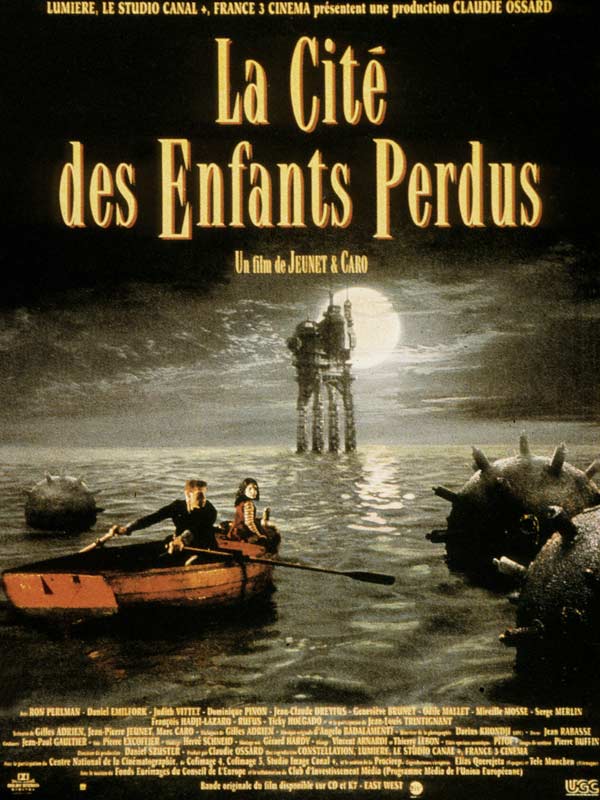
The disappointing film version of The Golden Compass, the first novel of Phillip Pullman’s extraordinary trilogy His Dark Materials, premiered in 2007 amidst a maelstrom of controversy, as various Christian groups–most notably The Catholic League– urged their members to boycott the movie citing the story’s perceived anti-God bias. The protesters had little to worry about since director/screenwriter Chris Weitz stripped the original tale of any complexity and relevant subtext, presenting a dull, lifeless movie. Even with gorgeous visual effects (particularly of the dæmons and the airships), superior acting (especially Dakota Blue Richards’ authentic portrayal of a fierce twelve year-old girl), and a $200 million budget, The Golden Compass offered yet another 21st century steampunk film failure.
Some thirty-five years after my initial discovery, steampunk still fascinates. I eagerly await to read about the new devices listed on Boing Boing. Even given the poor quality of most steampunk movies, films with airships and Victorian stylings still excite me. Clearly I am not alone as evident by the sheer amount of steampunk material continually being produced and the very existence of this anthology.
Vive la vapeur!


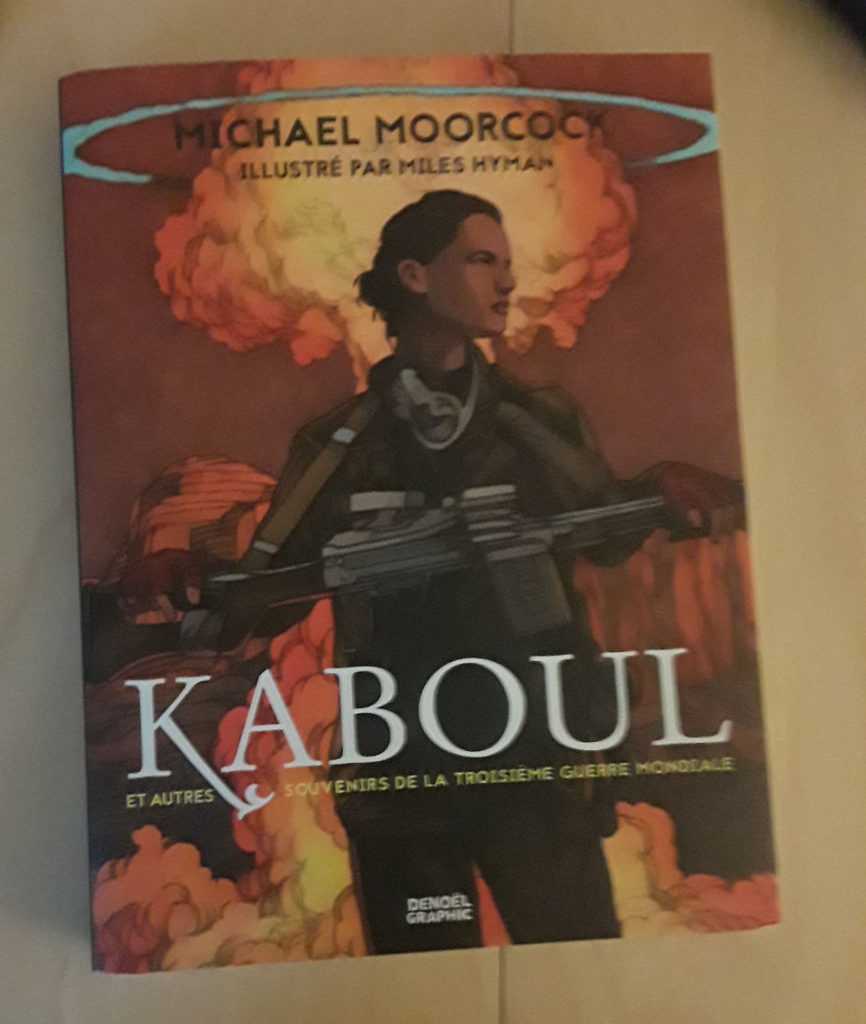
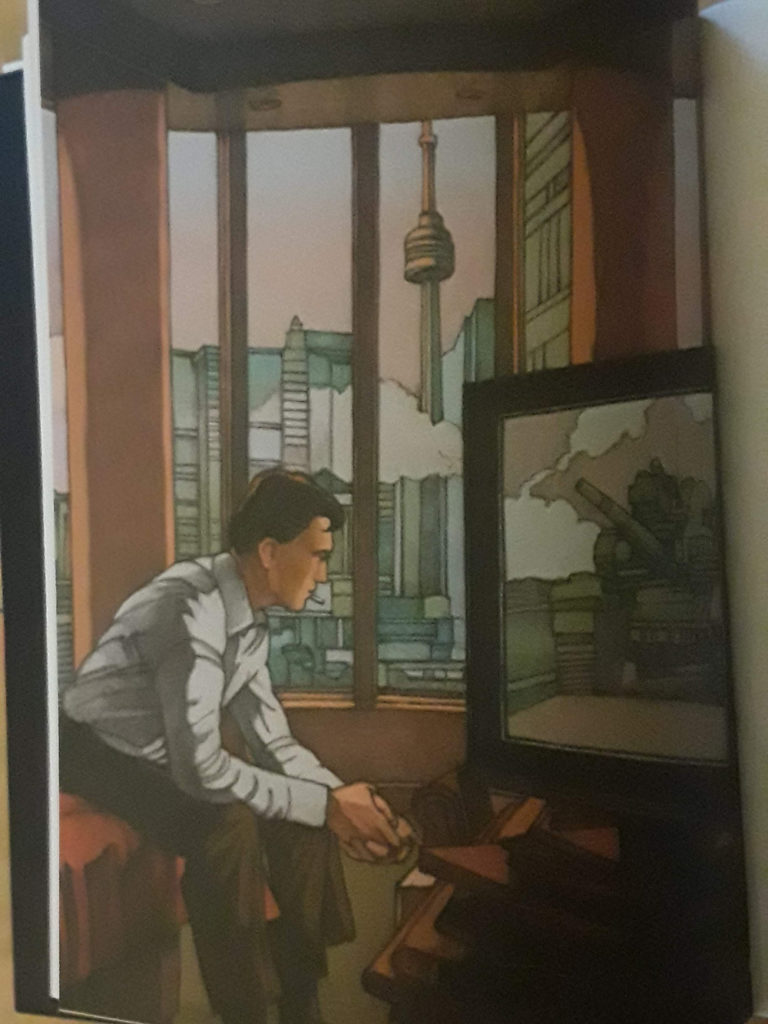
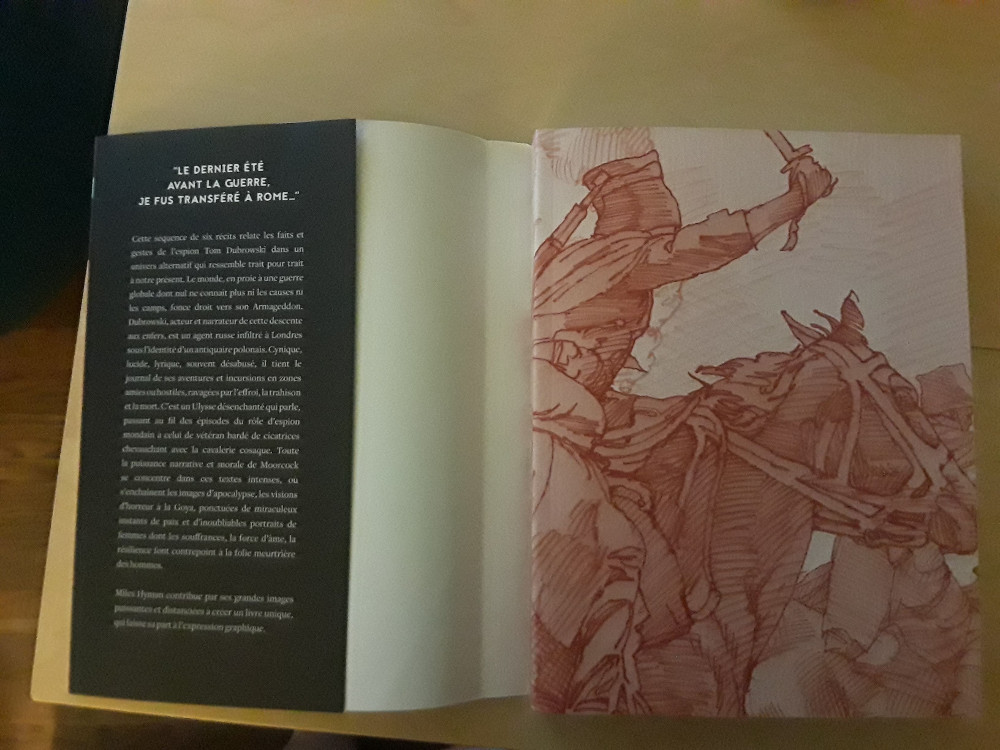


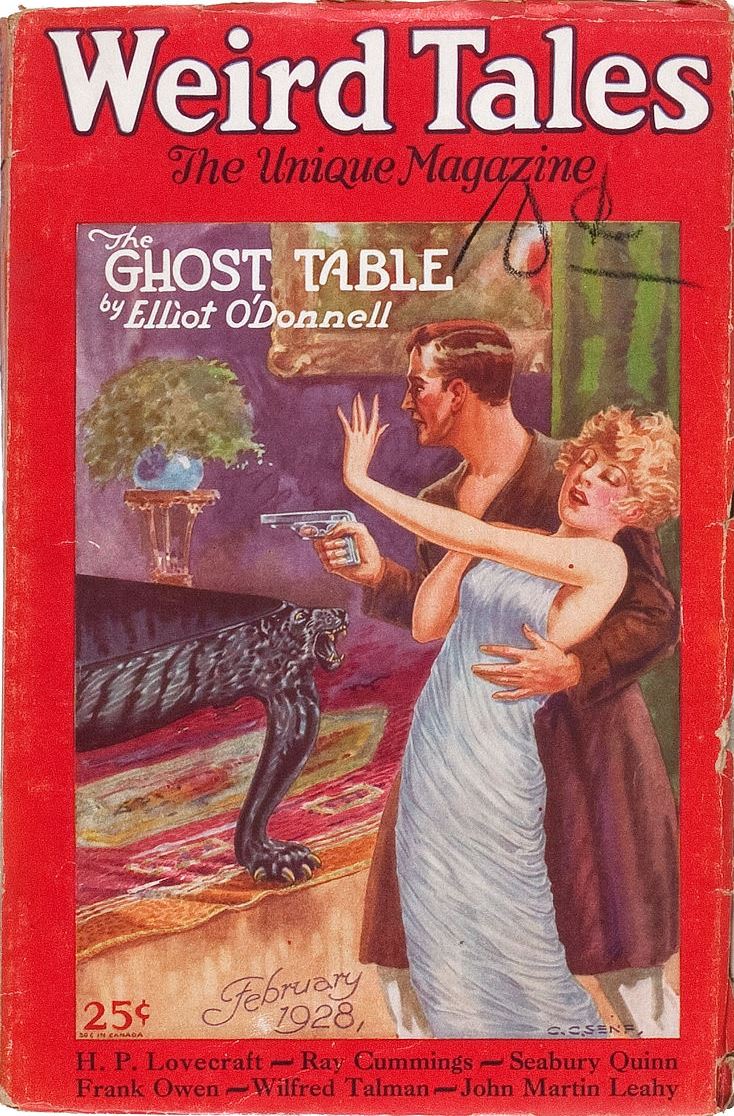
 In late August 1997, I loaded all my meager belongings into my Jeep Eagle Wagon and moved to Austin. I borrowed some money to get an apartment on east Riverside in the same complex where Sandy now lived. That first week, I sold my car for $1400, which enabled me to pay back the loan, covered my first two months rent, and allowed for some food money while I looked for a job and acclimated to the city.
In late August 1997, I loaded all my meager belongings into my Jeep Eagle Wagon and moved to Austin. I borrowed some money to get an apartment on east Riverside in the same complex where Sandy now lived. That first week, I sold my car for $1400, which enabled me to pay back the loan, covered my first two months rent, and allowed for some food money while I looked for a job and acclimated to the city.


